Alain's post
Thanks to the "verticalization" of a few circles we can measure air displacement at various positions in the updrafts: local wind speed and direction. Let us examine an updraft where the pilot spent a little bit of time. In general, we notice he has exploited two or three cores. Each has not the same verticalization wind which shows that the updraft is distorted more or less sharply by horizontal turbulence. For example, the number six updraft of Olivier Angenard on april 12, 2019 at Chamery. On that day, Fred Delbos won the French distance record with 227 miles. But in the morning, conditions were poor with limited convective boundary layer height. Nevertheless number of pilots overran 100 miles. On the following image the wind is adjusted to verticalize the main segment. Its strength is 14.8 mph and direction is 9°, very close to north. But we can see that there are potentially four segments to be verticalized.
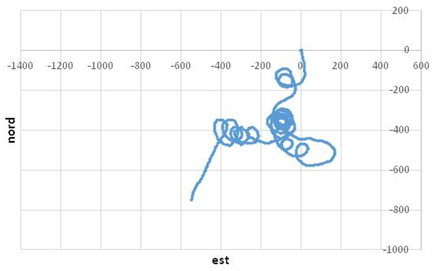
The first one has two loops and is verticalized with a wind of 16.5 mph from the 6°. As one can see on the next image, the shape of the updraft is quite different as if it was seen obliquely.
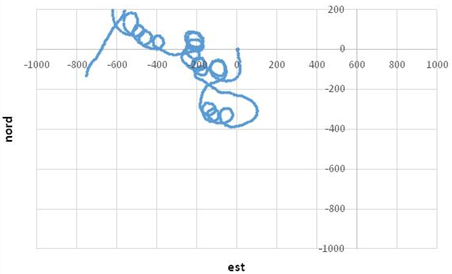
On the second segment there are three loops, but they are not regular enough to be verticalized. The third gives 15.8 mph and 8.5° and the fourth the same.
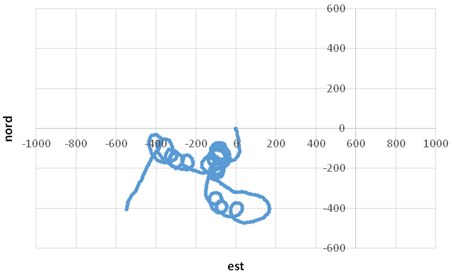
The last one with five loops gives 15 mph and 17.4°.
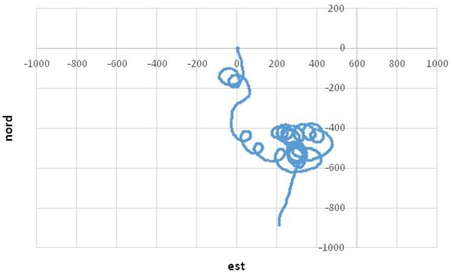
The different figures of the updraft give a good idea of the efforts of the pilot to find the best climbing zone but we can notice that the maximum span of the lift is always around 800 meters which should be more or less his diameter. The spread of the different winds is not so high:
- 16.5 mph and 6°
- 15.8 mph and 8.5°
- 15 mph and 17.4°
Purposely, the updraft presented here is in the average, comparable to hundreds of others already analyzed. One can find exceptional ones like the Azérables updraft of Martin Morlet at the end of his record flight on may 1, 2016. It is a late updraft since he gets in at 18:48 (legal time) at 1050 feet/ground. He is above Beaumont farm situated on a gentle slope oriented north. The wind is north, strong. The farm is about ten miles after “la Creuse”, an important river which, after large plains and “la Brenne” wet region, marks the beginning of a quite different landscape. The ground altitude which was 700 ft grows up slowly to 1400 ft, with small rivers flowing northwest between moderate hills. Martin follows the updraft during 15 miles. He gets out at 5600 feet. Corrected by a consistent wind of 18.9 mph from 349°, the verticality of the tracklog is remarkable.
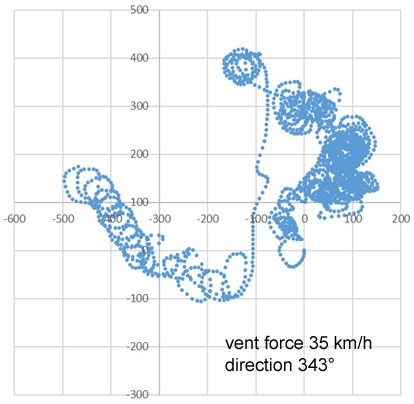
On the image, we can see the next updraft, between 5600 and 6600 ft. Is it another one or the same brushed by a different wind? Anyway, during the major part of the ascent, the tracklog remains in a square of 200 m for 42 minutes of drift and 15 miles distance. This shows an extreme stability of the wind and a turbulence down to zero. Unfortunately, tracklog analysis does not give any result about lifetime of updrafts. Maybe these columns follow their path as long as the sun provides his energy, strengthening when the ground is dry and warm, weakening when it is wet and conductive? To learn more about their life, It would be useful to organize a federal challenge of the longest time in the same updraft.
About ovalization
Under some circumstances, often during the first updraft, the pilot ovalizes. He stays longer front wind and shorter back wind in order to get altitude in the same geographic position. In that case, verticalization gives a wrong result. It is rather easy to detect an ovalization: after verticalization, the dots on the tracklog are tighter front wind. Usually, a spiraling pilot keeps a constant speed. It means that after wind correction all dots are equally spaced. Therefore, if we calculate the ecartype of the distance between the different points of a segment, the local wind will be the one which give the minimum standard deviation. This method can be applied to any section of spiraling. A comparison on a complete tracklog has shown that the average wind found by this method should differ by around one mph from that by verticalization. The method is not appropriate if the pilot does not keep a constant speed, for example if he accelerates front wind and decelerate back wind.




